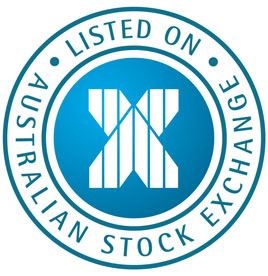
by Chris Weston, IG Markets
There has been a sense of excitement through the markets today, not just because of the binary outcome in the Scottish referendum, but because there seems to be a fundamental shift occurring through the capital markets.
Firstly, I have to say Janet Yellen and the Federal Reserve are doing a top-notch job in managing asset prices. By all intents and purposes, they have told the market they plan to raise short-term rates five times in 2015 and a further six in 2016 – and the S&P 500 continues to find buyers. The fact that the Fed have such aggressive targets for the funds rate appears to be real confirmation the USD is the standout currency to be long. However, my major point of contention is the Fed’s inflation forecasts really don’t justify moving the funds rate to 2.9% (using their mid-point) in 2016.
USD looking overbought
Still the USD is overbought, but more so against the low yielding currencies. The trade of being long currencies is where central banks are looking to restrict policy, while funding the position by being short currencies from low inflation economies (Japan and Europe) is long in the tooth. With USD/JPY at ¥109.15, the upside from here seems limited.
However, for those who like to align themselves with trends, this trade has been as clear cut as they get. The USD is overbought at current levels, but I continue to believe the greenback is going to gain substantially over the coming years against both the JPY and EUR, and we need to look at assets and companies that benefit from this move.
If the Fed are going to raise aggressively, we have to think that US bond yields are going higher from here. The hunt for yield in the equity market will struggle and, while I am certainly not an advocate of shorting Aussie banks, I feel there will be much better two-volatility from here.
It also seems logical that strategists are once again looking at potential vulnerabilities in emerging markets, especially for those who haven’t addressed current account imbalances as well as India have. I would immediately argue that long USD/TRY (Turkish lira) or USD/ZAR (South African rand) make sense, given they have sizeable deficits that require external funding.
On the subject of ballooning central bank divergence, there has been some discussion about yesterday’s poor take up of funds from the ECB’s Targeted Long-Term Refinancing Operations (TLTRO) increasing the likelihood of all-out QE from the ECB. The fact that a modest 225 (of a possible 382) institutions borrowed 20% of the funds available at a mere 15 basis points has had some suggesting banks just aren’t prepared to lend. This seems unjustified though, and with the bank asset quality review due in a month and a degree of negative stigma attached to taking these funds, there was always a chance the take up would be poor. We therefore need to centre our attention on the December TLTRO, with expectations that this allotment should be well supported.
In Asia, traders have continued to bid up the Nikkei today, with the index at the highest levels since 2007. As I have said, if traders want to hedge a rise in US bond yields, then being long the Nikkei makes absolute sense, given the impact a higher USD/JPY has on the market. The ten-day correlation between the US five year bonds and USD/JPY is 71%, and this correlation will only continue.
Of course, the big news today has been the Scottish referendum on independence. Trading desks have been staffed in London, with all hands on deck around Asia and Australia. The market was always positioned for Scotland to remain in the United Kingdom and at no stage had the rates market displayed any signs of stress. A lower prospect of upcoming hikes from the BoE was never really priced out. Perhaps this conviction was heightened when the president of YouGov, Peter Kellner, said he felt the odds of a ‘no’ vote were 99%. From here, we have seen sustained buying in sterling, most notably against the JPY, AUD and NZD.
Traders fading cable moves
On GBP/USD, the downtrend drawn from the July 15 high at $1.6418 has been broken, with the pair hitting $1.6524 – just short of the series of August lows. As the day rolled on and the ‘no’ camp gathered momentum, traders started to fade the move and there has been an element of ‘sell the rumour’ materialising.

FTSE futures have been bid all day. There seems like there will be relief shown in the market, with the rest of Europe probably expressing some comfort that EUR/GBP hasn’t rallied significantly – this of course would have happened if independence had come to pass. UK financials will naturally be in focus, as will the usual suspects, such as Weir, Barr, Diageo and Stagecoach.
Scotland remains an integral part of the UK and, while some concern has been shown that the majority in Glasgow voted for independence, it wasn’t a strong majority. Markets can move on from this event now, but the fate of the pound is still subject to great debate. We know the Fed have opened the door to rate hikes and have signalled they will be more aggressive than the BoE’s gradual approach. With 5% currency account deficit, however, GBP/USD could be vulnerable.
Ahead of the European open we are calling the FTSE 6898 +79, DAX 9868 +70, CAC 4479 +15, IBEX 11058 +67 and MIB 21248 +120